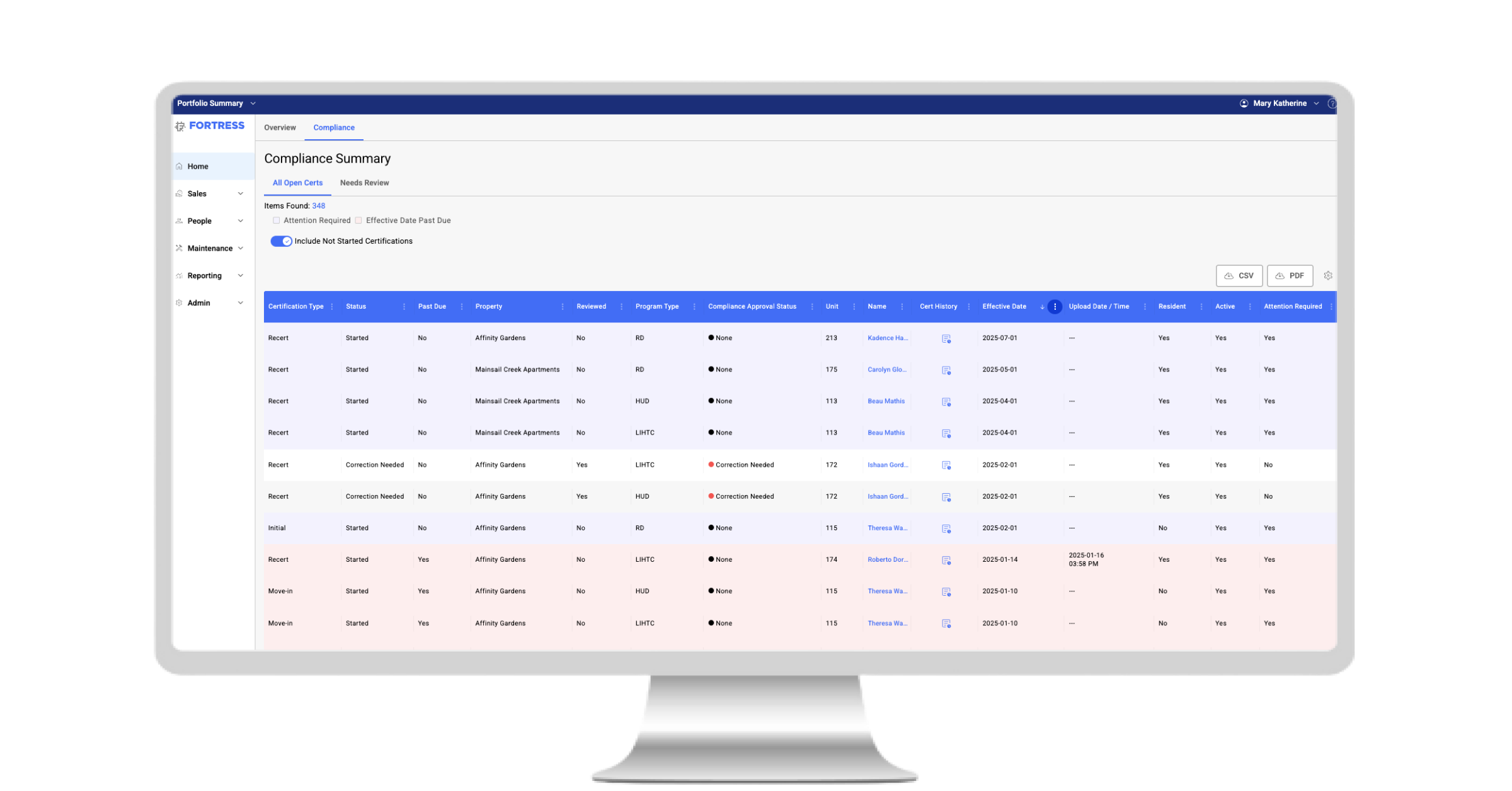Trying to manage multifamily properties without the right tools is a bit like trying to build a house without strong foundations. Admin overload, clunky systems and reduced transparency can eat away at your time and your business can start to crumble.
But, don’t worry, it’s not as bleak as that opening paragraph sounds. With a great multifamily management software solution, you automate processes, centralize key data and gain more time to focus on scaling as a property manager or owner.
To help you out, in this article, we explore what you need to know about the latest developments in proptech (property technology) and offer recommendations for what you should look out for in a core multifamily management software solution.
What is multifamily asset management?
Multifamily asset management involves overseeing residential properties with multiple units, focusing on maximizing returns, tenant satisfaction, and property value. And if you’re reading this, you probably know a fair bit about that already.
However, just in case you’re new to the industry (or suffering a sudden bout of amnesia), this section will break down the basics. Then we will take a look at how multifamily management software can support different areas of operations.
Types of properties
Multifamily properties are buildings consisting of five or more units, which are owned by investors, Real Estate Investment Trusts (REITs), or corporations. While the list of potential assets is extensive, they generally fall within the following categories:
Garden Style
This multifamily housing type is common in suburban areas. Typically consisting of 1-3 stories, garden-style apartments often feature exterior doors, providing residents with direct access to outdoor spaces.
Mid/High Rise
Mostly located in inner city markets, mid/high-rise apartments are characterized by their taller structures, ranging from 5 to 40 stories. These buildings command a wide range of rental rates, varying from approximately $100 per square foot in New York City to around $4 per square foot in other major metropolitan areas.
Townhouse/Multiplex
Townhouses or multiplexes are typically found in urban and suburban areas where units are connected or adjacent to one another, often forming a row or cluster of residences. Townhouse-style multifamily housing provides a blend of privacy and shared amenities.
Single Family Build to Rent
Catering specifically to renters' desire for a single-family home experience, this multifamily asset type consists of communities comprising individual single-family houses. These developments resemble typical subdivisions but are designed and constructed to meet the rental demand for standalone homes.
Multifamily asset classes
A-A+
These assets represent the top tier of multifamily properties, characterized by extensive amenities, concierge services, and premium rental rates. They often feature high-end finishes, modern designs, and luxurious living experiences.
C-B
This category primarily consists of garden-style assets that have been constructed within the last 20-30 years. While they may not have the same level of luxury as A-A+ properties, they still offer desirable features and amenities. These assets might have undergone moderate renovations or updates to maintain their appeal.
D
D-class assets typically refer to properties that were built over 30 years ago and have received minimal to no renovations or improvements. These properties often exhibit signs of significant wear and tear and their rental rates may be lower than other asset classes. They may require substantial investment for repairs and upgrades.
Affordable
Affordable housing assets are specifically developed and managed to provide accommodation for low-income individuals or families. They are subject to specific regulations and rent restrictions to ensure affordability for eligible residents.
How proptech streamlines property management
Across asset classes and property types, proptech streamlines the day-to-day work involved with property management. You can think of multifamily management software as a friendly assistant that you can offload stressful and boring tasks to while gaining time, data and tools that help you boost resident experience and identify opportunities for growth.
For example, with every new tenant, you can automatically update lease agreements and track online rent payments. Then, in the same place, you can maintain an overview of operational and financial reports and get insights about the market that could put you ahead of the competition.
Pretty neat, huh? Here’s a closer look at what multifamily management software covers:
Physical asset management
- Buildings, floorplans, units
- Rent rolls
- Market rents, amenities with values, rentable items
- Work orders, turns, inspections
People management
- Prospects, applicants, residents, prior residents
- Leases and renewals
- Ledgers and documents
- Real-time communication
- Resident Portals
Marketing
- Websites
- SEO
- ILS syndication
Reporting
- Operating reports
- Business Analytics
Accounting
- Trial balances, general ledger system
- Financial reports
- Invoices, payables, procurement
- Cash management, bank reconciliations
The importance of property management automation & centralization
A centralized, automated property management solution is the most efficient way to manage your business and, looking at the history of the industry, it’s clear why… Where traditional proptech solutions were lacking was (ironically) in their attempts to try to handle everything.
These all-in-one platforms provided initial benefits, but they just couldn't match the specialized solutions offered by standalone companies. And, being full of buttons and manual workflows, property managers and owners lost hours searching for information and completing repetitive tasks.
As our very own Kerri Davis described when speaking to Forbes, “The word "automation" was once a cringeworthy phrase linked with impending doom and job insecurity. But more recently, property managers have embraced technological advancements to streamline operations and enhance overall efficiency.”
By using a core hub solution such as FORTRESS, you can centralize key data and processes while connecting to best-in-breed solutions such as Sage Accounting and TransUnion. This means you’ll get all the features and leading tools you need in one easy-to-use dashboard and you’ll be able to create processes that work as you scale.
To carry on the house analogy we started with, this is the equivalent of buying a new property instead of trying to modernize a building erected decades ago. FORTRESS makes it easy for you to leverage a flexible solution and accelerate property management growth from the start.
Learn more in our eBook Looking Ahead: Multifamily Property Management and Technology in 2024.

.png)
.jpg)
.png)


